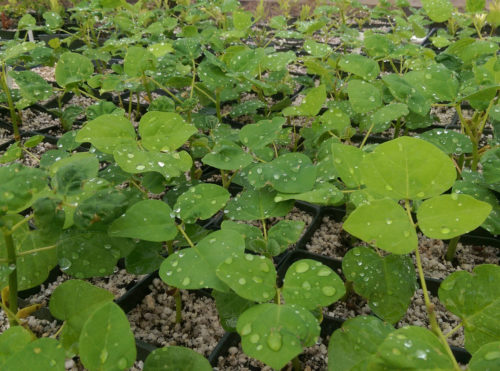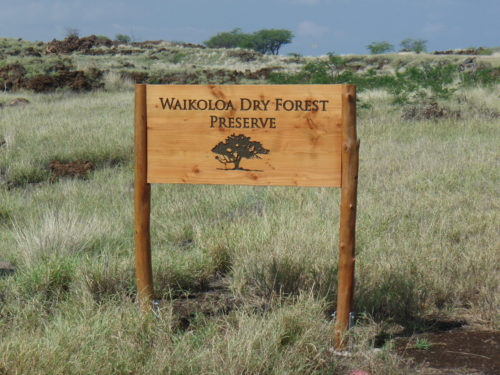Our Storied Place
Waikōloa is a large ahupua‘a situated between the ahupua‘a of Lālāmilo and Pu‘uanahulu. These important land divisions stretch from mauka to makai and in their delineation, allow us to better understand the historic role of people in each place. Waikōloa, is one of the driest places in the Hawaiian archipelago and as such, known historic populations were concentrated near the sources of water; namely near Waikōloa’s coastline at ‘Anaeho‘omalu and Kalāhuipua‘a.
You’ll see the place named spelled two ways, Waikoloa, which translates to Duck Water or Koloa Pond, and may refer to the standing waters that were once prevalent in the region and hosted a variety of birds including the native Koloa. We also use the spelling Waikōloa which is known to be a very strong wind. In one mo‘olelo, a strong wind, Waikōloa, blows water out of an ‘awa bowl at Holoholo Kū, a Pu’u near Waimea, and carries the water all the way to Waiki‘i where the water is deposited and from which a spring is formed. The winds of Waikōloa can be ferocious, and in our spelling, we honor this wind that defines our region.
Historically, much of Waikōloa was known for its harsh terrain, dry conditions and pīli grass plains. However, important lowland dry forest and shrubland habitat also occurred in this area as evidenced by the remnants that we are working to protect today. Stories of Waikōloa nui also mention that it was an important place to catch birds. Birds were traditionally caught as a source of food and feathers used in the intricate ‘ahu ‘ula (feather cloaks), and mahiole (feather helmets). While there may only be a few native birds that persist in Waikōloa, we hope that by restoring habitat, some of the native birds will one day come back to our forest.
Wiliwili Forest
In the driest places in Hawai‘i, a very unique assemblage of plant species thrive. Chief among these plants is the Wiliwili tree. Wiliwili are important to people, place, and our restoration efforts. They are a charismatic species with extremely light wood which made them useful in many applications such as floatation. Wiliwili were used for ama on wa‘a (canoe outriggers), olo (surfboards), and other floats used in fishing.
In Hawaiian mythology, the story of Moholani and the Wiliwili trees of Pa‘ula in Ka‘ū explains how wiliwili came to have their unique shapes and phases. It is said that there were four sisters, Moholani, Wiliwili-Oheohe, Wiliwili-Peapea, and Wiliwili-Kuapu‘u. Moholani was very beautiful; she married and had a son named Kauila. Her sister Wiliwili-Oheohe was bald, Wiliwili-Peapea had a mass of tangled hair, and Wiliwili Kuapu‘u was humpbacked. In a time of need, Moholani’s three sisters refused to help her. This angered her son, who transformed the three sisters into trees. They became the leafless or bald wiliwili, the wiliwili tree whose leaves flutter in the wind and the wiliwili with the crooked trunk. The ancient wiliwili trees of Waikōloa may not be the exact trees described in this story from Ka‘ū, but they certainly embody the characteristics of these famous trees.



